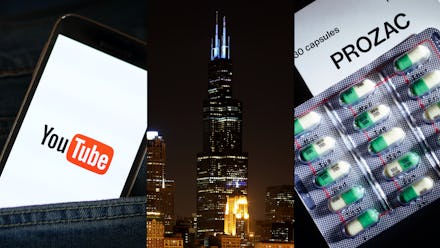7 Asian American creations the world couldn't live without

May is Asian American and Pacific Islander Heritage Month. While it's worth having a dedicated time to celebrate the people of Asian descent who have enriched our country, society, and personal lives, 31 days is simply not enough to capture all of the contributions that these folks have made. In fact, your life is constantly being impacted and improved thanks to the efforts of the AAPI community. To prove it, we've rounded up a list of things you use daily that were brought to life by AAPI creators.
YouTube
In 2005, Steven Chen ran into a problem: He was having trouble sharing a video. Which video, exactly, is up for debate. According to Chen, it was some clips from a dinner party at his apartment; according to one of his cofounders, the video was Janet Jackson's "wardrobe malfunction" from the 2004 Super Bowl halftime show.
Regardless of the origin, the result was the same: Chen and two of his co-workers at PayPal started to build YouTube. Just a decade and a half later, the platform is deeply integrated into our lives. More than 2 billion people log into YouTube every month to watch the works of incredible creators, clips from their favorite shows and movies, and, of course, the occasional cat video. On a given day, there are more than 5 billion videos on YouTube.
The modern internet
Before Yahoo was a punchline about the internet of old, it was the world's biggest web portal. For nearly a decade, it defined how many people experienced the internet. And before Yahoo was Yahoo, it was Jerry and David's Guide to the World Wide Web. The Jerry in that partnership was Jerry Yang, a Taiwanese-American computer engineer. While studying at Stanford University, Yang started the site that would become the entry point to the internet for millions of people.
Before search engines were a widely used tool, Yahoo provided an organized hierarchy through which people could browse the web. While Yahoo no longer has the power or influence that it once had, there is no denying that the internet as we know it today would look totally different if not for Yang's early attempts to organize, curate, and create a simplified browsing experience in the early days of the modern internet.
OLED, a.k.a. what all your screens are made of
The screen that you're reading this on — whether it's your smartphone, tablet, laptop, or even television — is more than likely an OLED display. OLED stands for organic light-emitting diodes, and it has become the go-to display for most screens thanks to its impressive ability to present digital imagery in its full beauty.
We have Hong Kong-American physical chemist Ching Wan Tang to thank for that. He's put in decades of work and research on a number of electronic devices, but none quite as consequential as OLED. In 2018, Tang was inducted into the National Inventors Hall of Fame for his research on the topic, and we're all seeing the world in a new way thanks to him.
Fiber optics, a.k.a. the foundation of modern communication
In 1954, Indian-American physicist Narinder S. Kapany published research demonstrating a technological breakthrough: the ability to bundle thousands of glass fibers together and connect them from one end to another. Simple as it sounds, it sparked the start of essential research that would eventually lead to the birth of fiber optics.
Fiber optic technology allows for the transfer of huge amounts of information, sending the information across incredible distances at lightning-fast speeds. Fiber optic cables are a foundational part of the modern internet and how we communicate today, and it wouldn't have been possible with the years of essential but too often unrecognized work of Kapany.
Antidepressants
Millions of Americans take antidepressants, an essential medication that helps people to relieve the dread, exhaustion, anxiety, and emotional pain that often characterize clinical depression. This relief wouldn't be possible without David T. Wong, a Hong Kong-American neuroscientist who is credited with the discovery of fluoxetine.
You might know the drug better by its brand names, which include Prozac and Sarafem. This type of antidepressant is commonly prescribed to those dealing with depression, obsessive-compulsive disorder, panic disorder, and other conditions that can be debilitating without treatment.
U.S. Postal Service mail trucks
You know those little trucks that United States Postal Service workers drive to deliver your mail, no matter snow nor rain nor heat nor gloom of night? You can thank Vietnamese-American Han T. Dinh for them. A longtime federal employee who has worked for the Department of Energy, Dinh currently serves as the director of vehicle engineering at the U.S. Postal Service. In addition to helping craft those ubiquitous trucks, Dinh has made strides in getting the USPS to move away from dirty-burning fuels, playing a role in creating a natural gas fleet in the 1980s and helping launch programs to shift the agency's vehicles to hybrid and electric.
Skyscrapers
Whether you live in a city or just visit from time to time, you likely can't help but be taken by the awe of skyscrapers — buildings that seem to keep climbing to impossible heights. By building up instead of out, skyscrapers have made it easier for more people to occupy the same space, living and working together in densely populated places.
That was made possible by Fazlur Rahman Khan, a Bangladeshi-American engineer and architect who saw the immense potential for building up. Khan, the "father of high-rises," designed the Sears Tower (now the Willis Tower) in Chicago. He also was a pioneer of computer-aided design (CAD), which helped to revolutionize modern architecture.